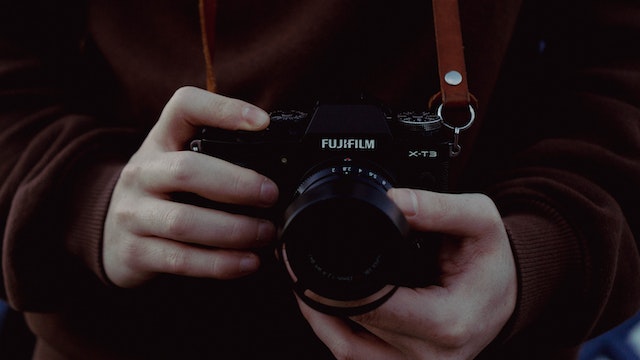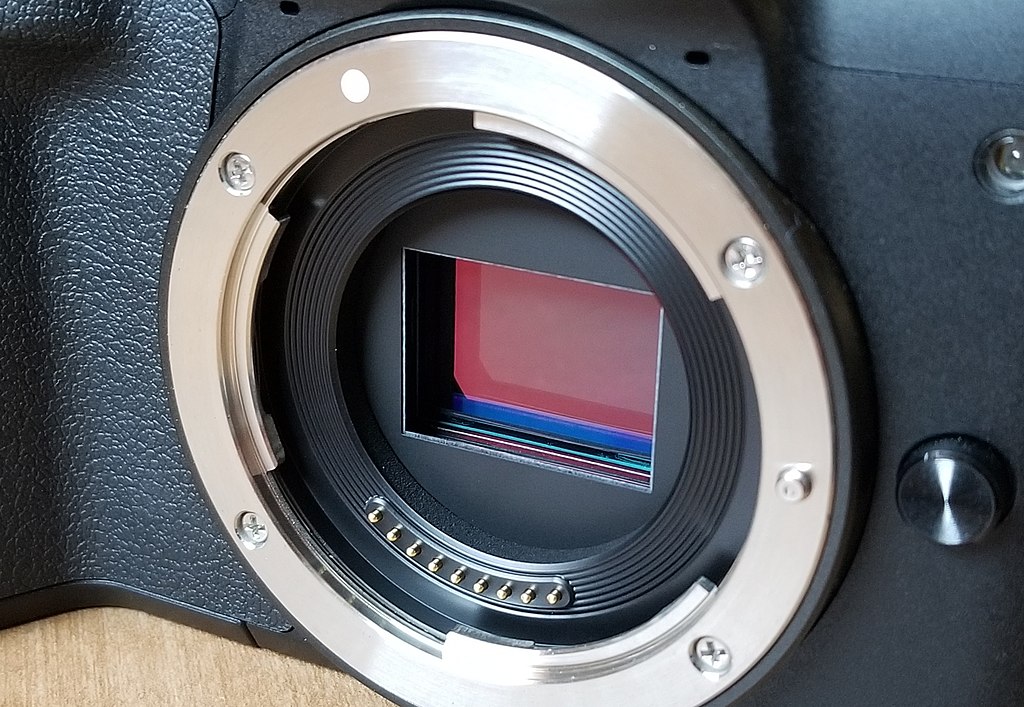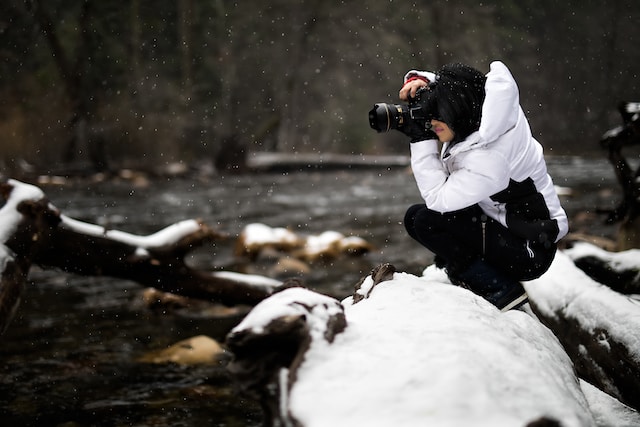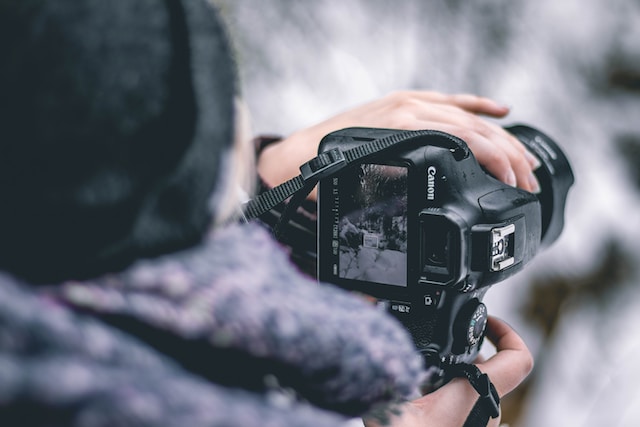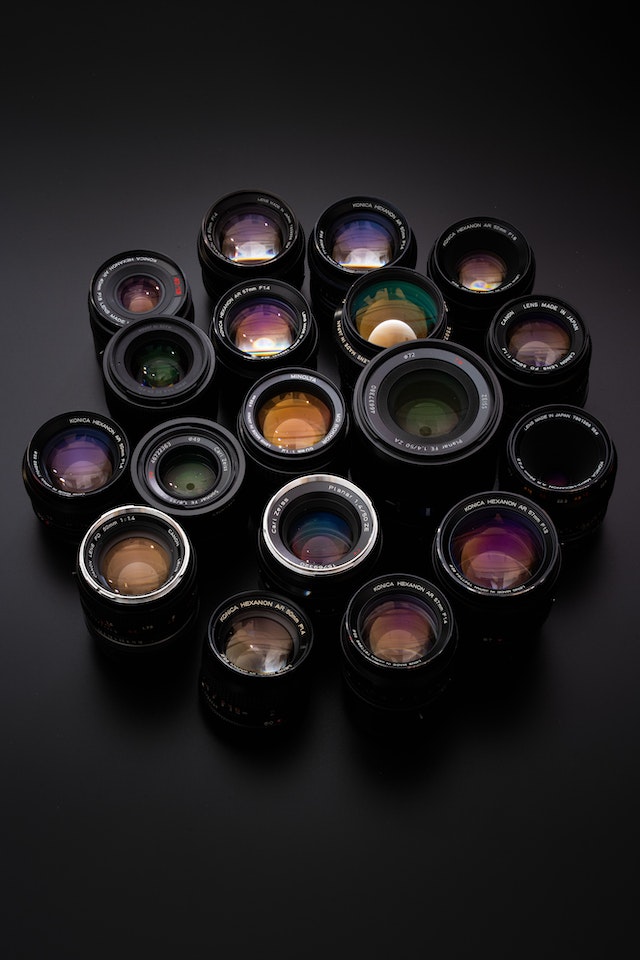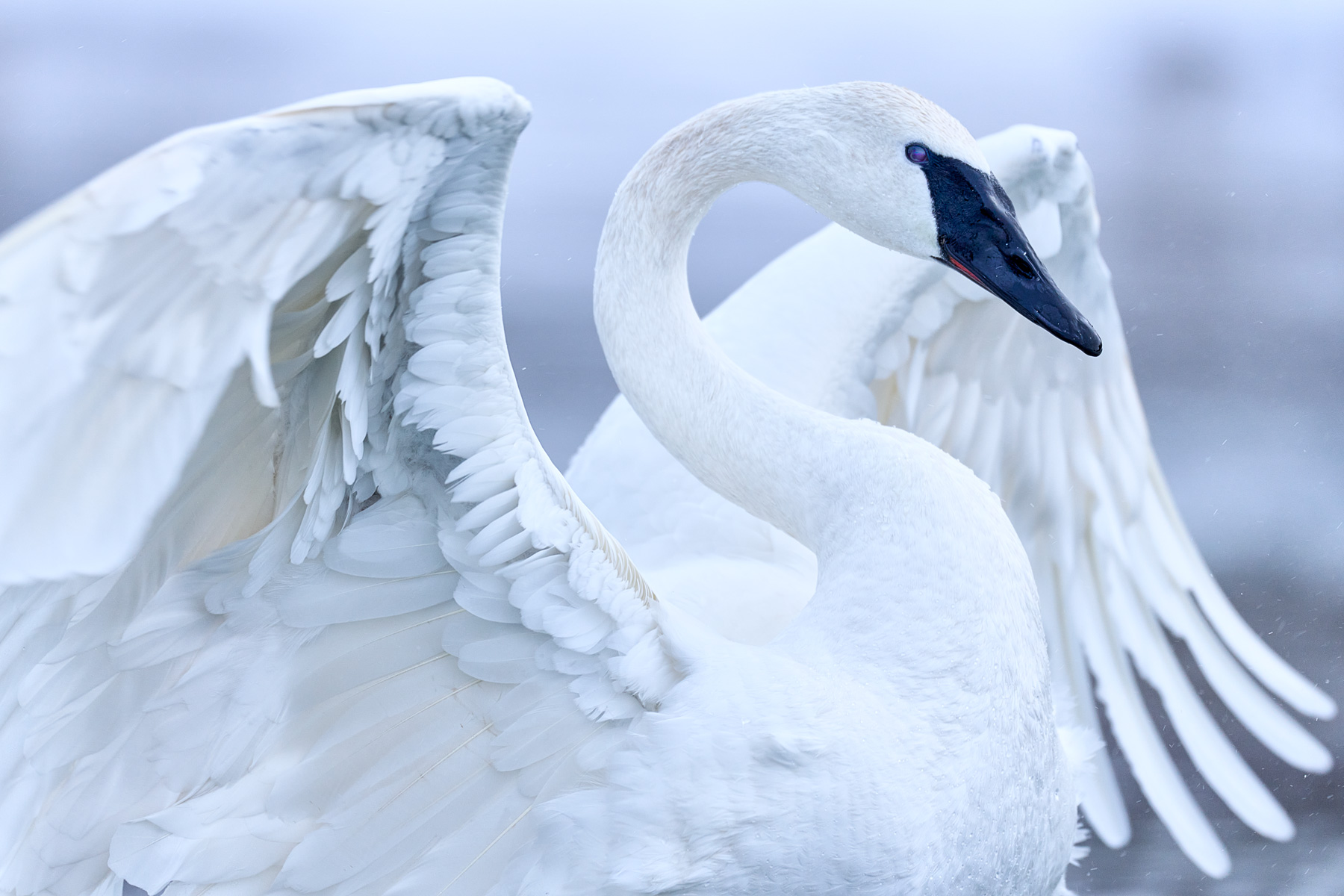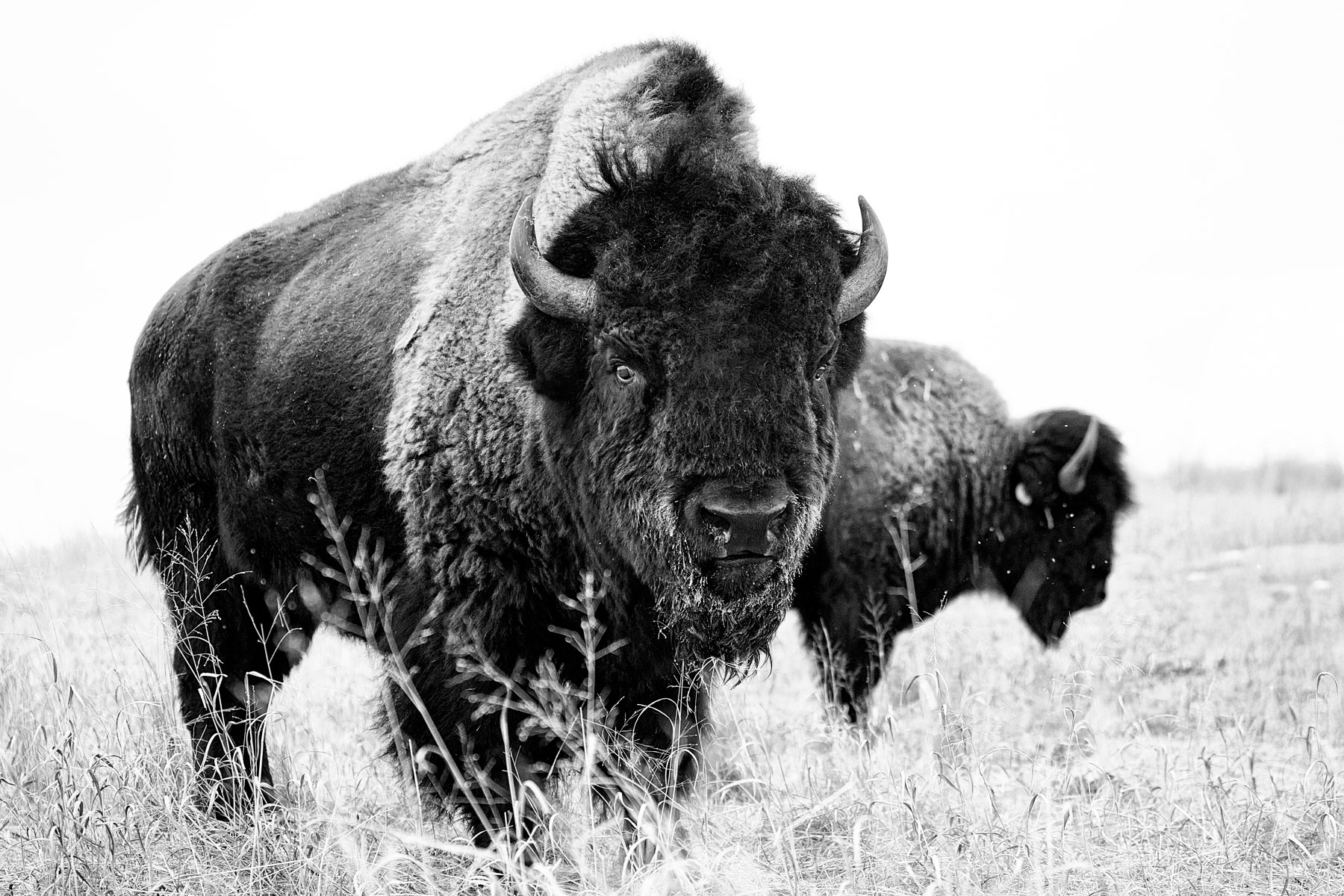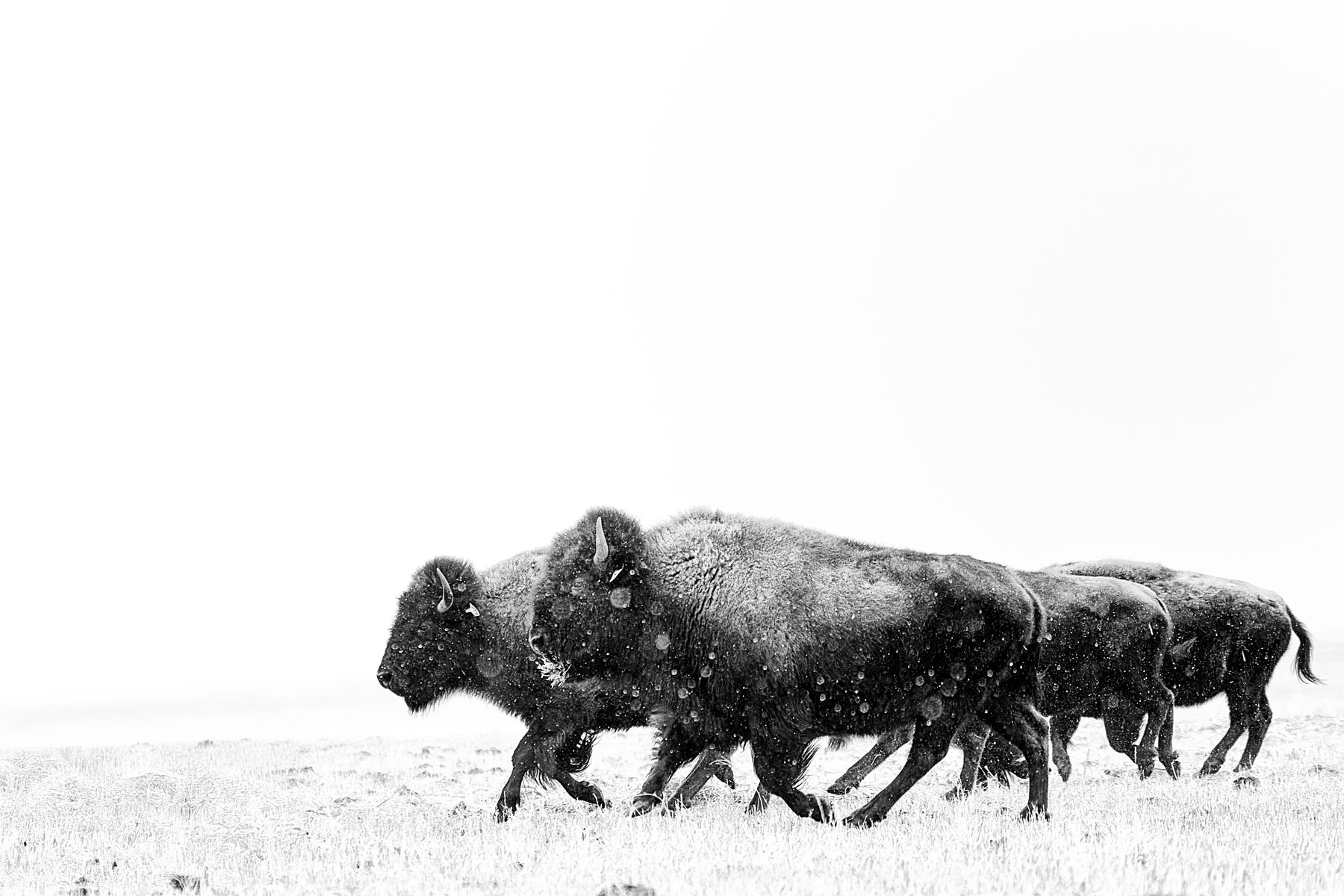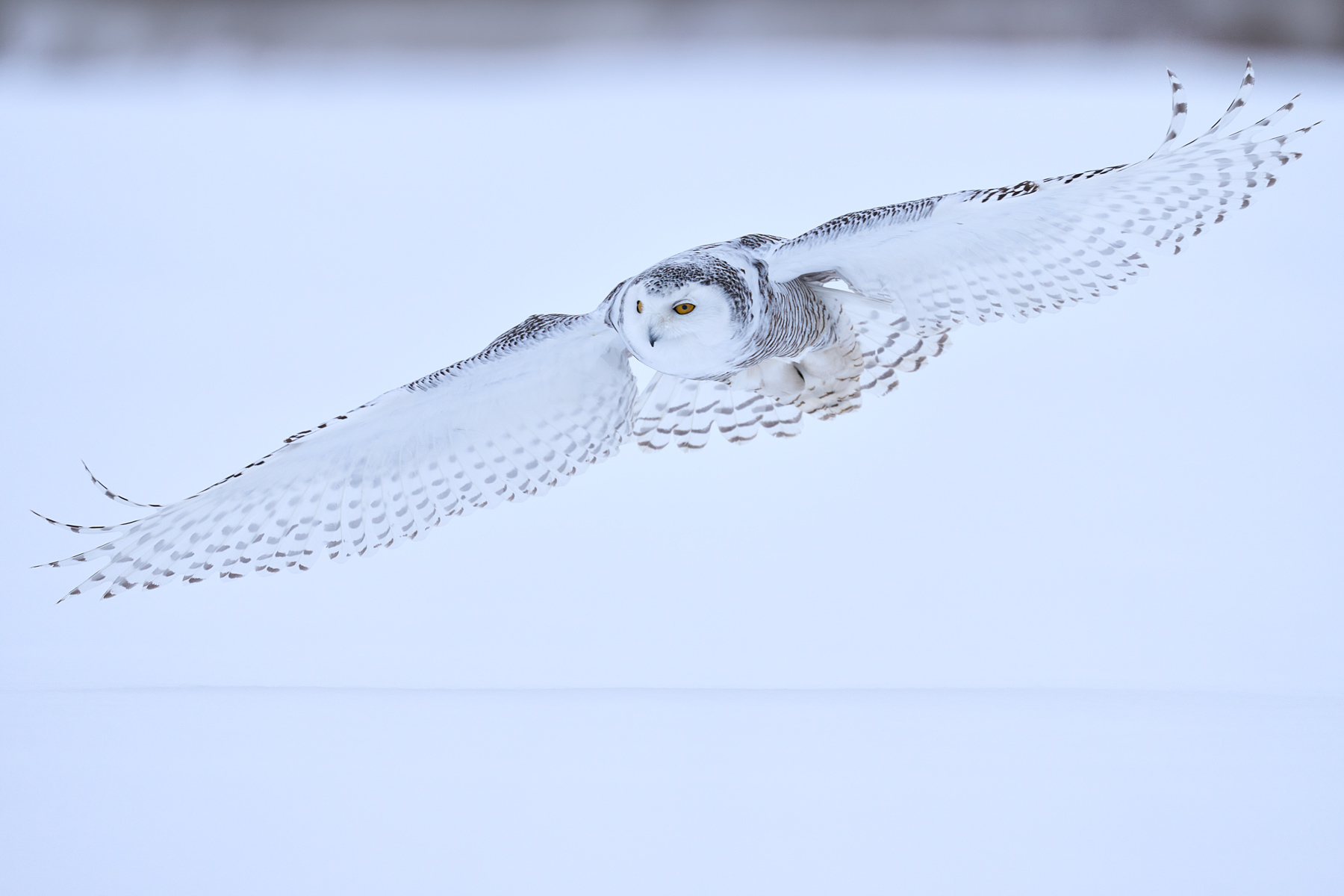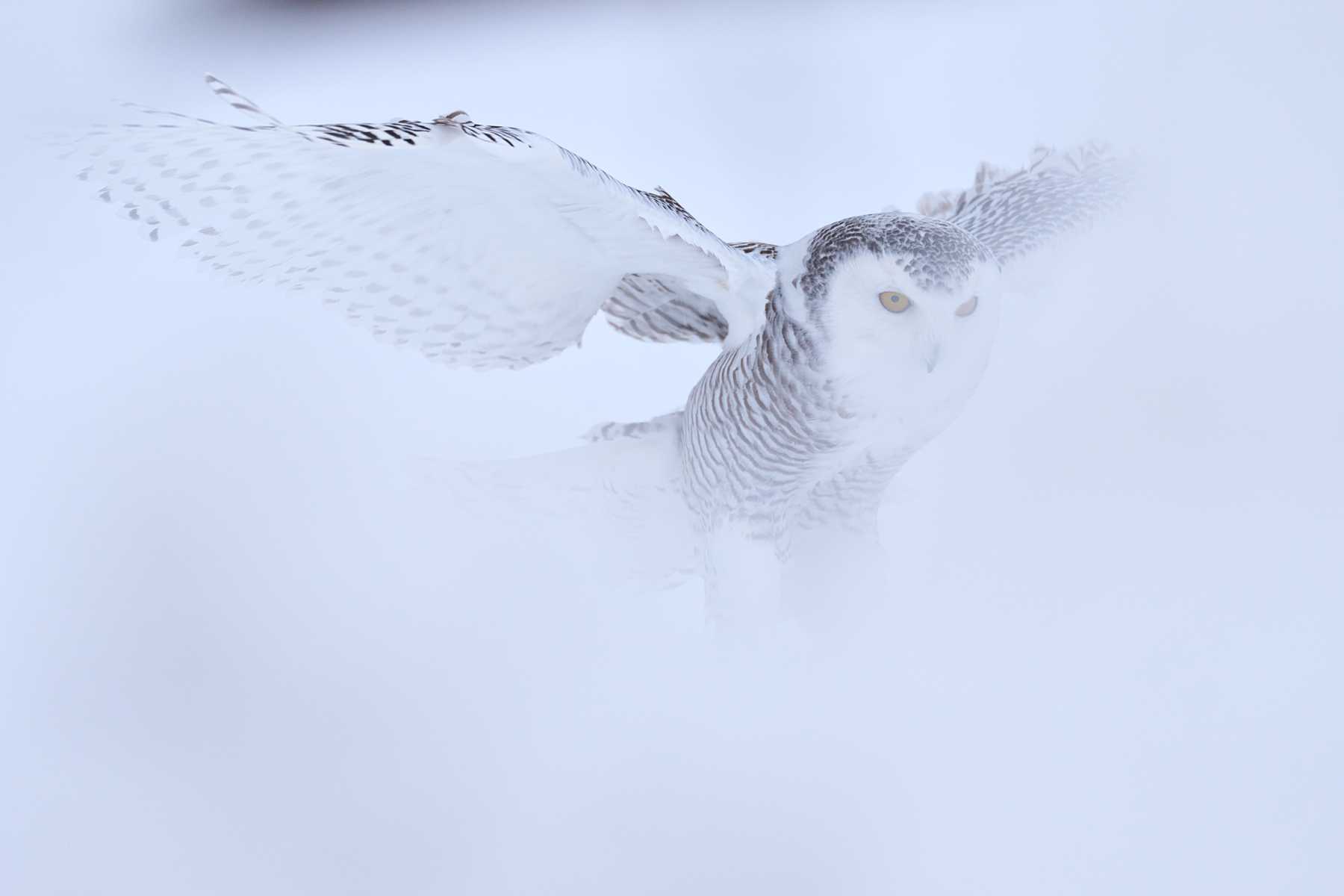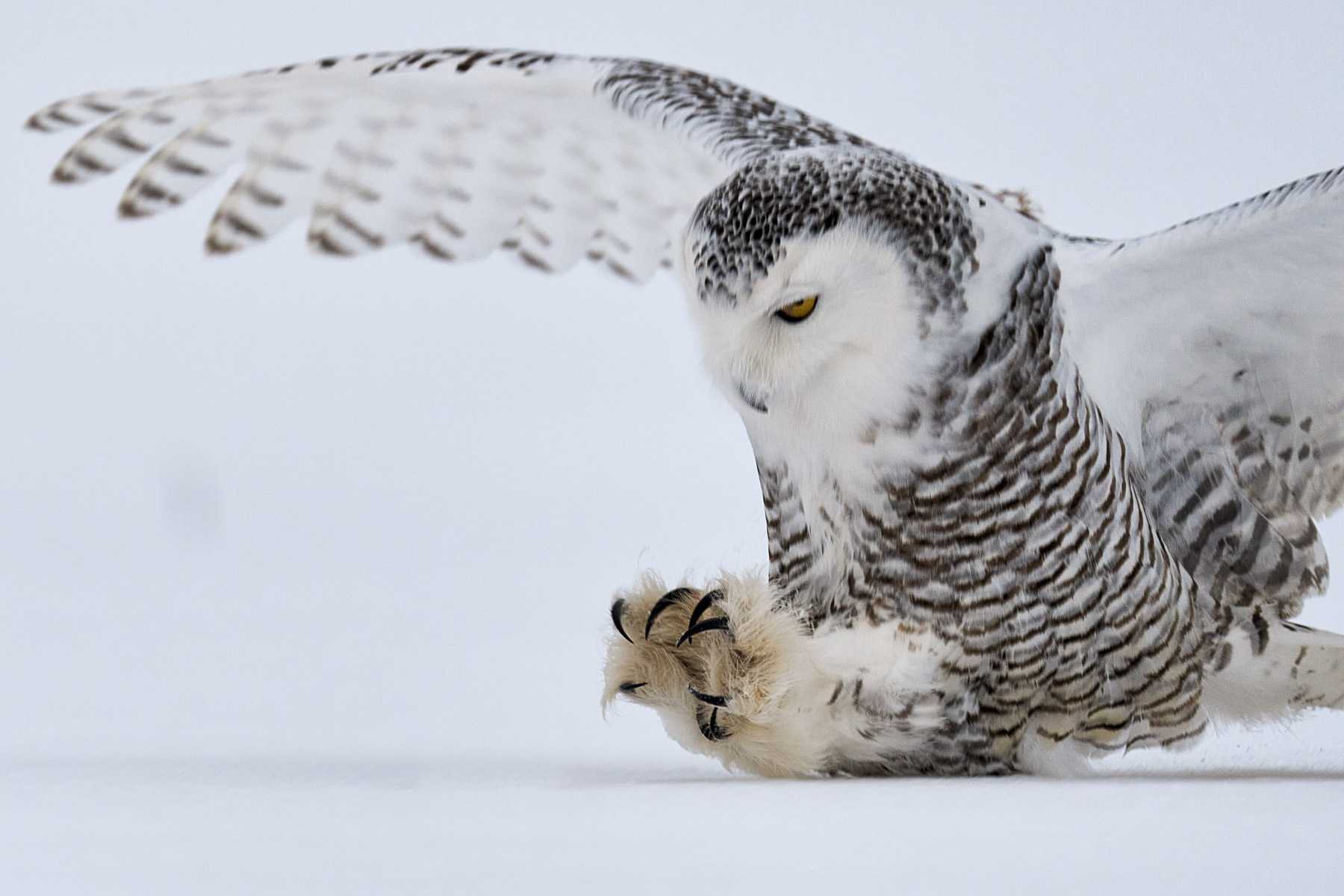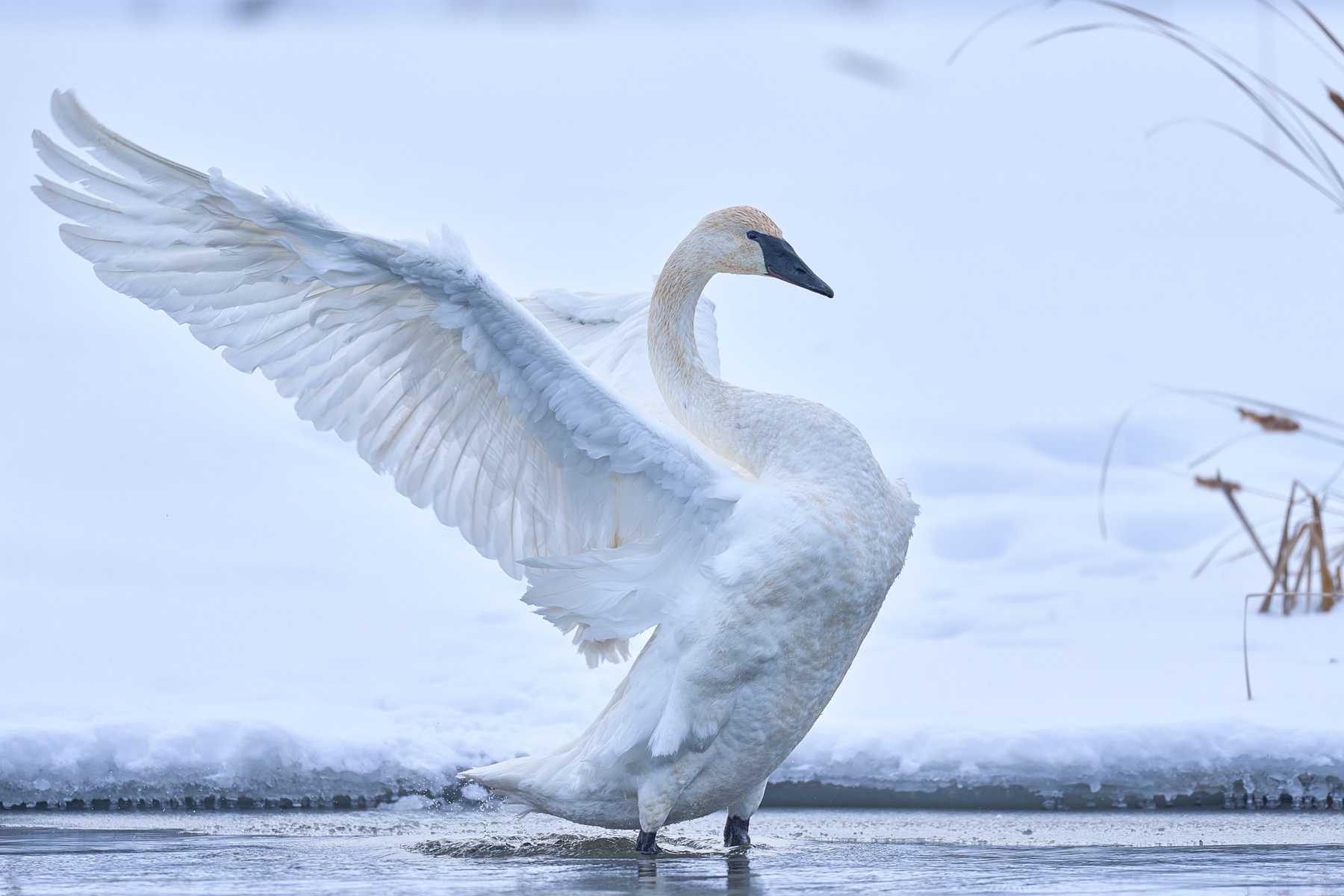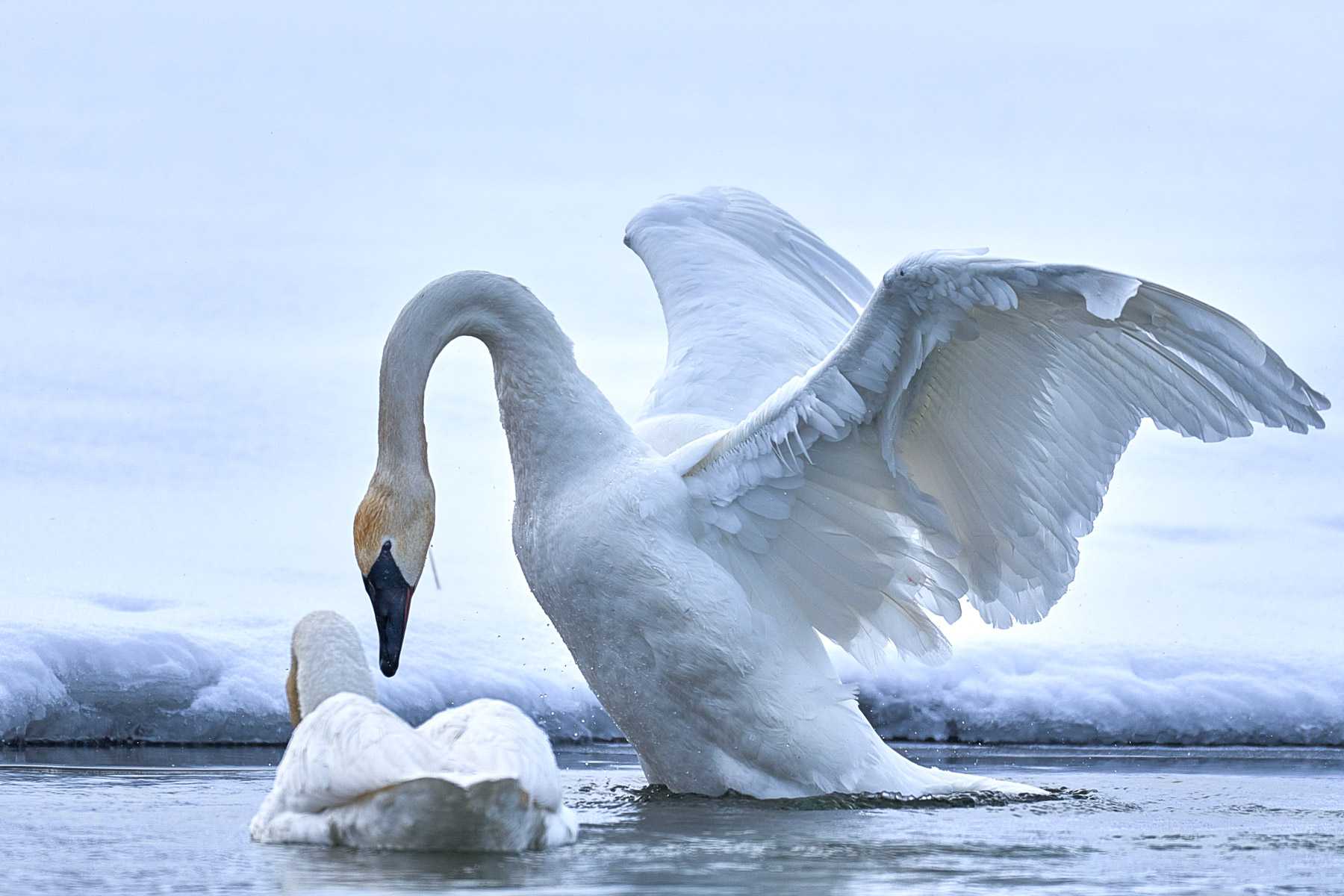The Beginning: A New Wave in Photography
The Rise of Mirrorless Cameras in Wildlife Photography hit the market in 2008, they were met with mixed reviews and a dose of skepticism. Photography purists questioned the absence of a mirror mechanism—a key component in SLR (Single-Lens Reflex) cameras that had been the industry standard for decades. Others viewed them as an awkward middle-ground between compact digital cameras and DSLRs, offering neither the convenience of the former nor the power of the latter.
However, it didn’t take long for photographers to recognize the potential advantages of these new devices. Even in their earliest incarnations, mirrorless cameras offered the benefits of reduced size and weight, thanks to the removal of the mirror box and optical viewfinder. Suddenly, a new wave of possibilities began to take shape in the realm of photography, opening doors for innovation, adaptability, and convenience.
The Rise of Mirrorless Cameras in Wildlife Photography was The Technological Leap
Brands like Panasonic, Olympus, Sony, Canon, and Nikon began investing in mirrorless technology, focusing on closing the performance gap between mirrorless cameras and DSLRs. Each iteration of new models came with improvements—better sensors, faster autofocus, improved electronic viewfinders, and enhanced video capabilities.
By the early 2010s, the technology had progressed to a point where mirrorless cameras were no longer considered mere alternatives to DSLRs but strong competitors. Professionals began adopting them for serious work, finding that the pros outweighed the cons for many types of photography.
Pioneering Features
One of the biggest advantages of ditching the mirror mechanism was the opportunity for innovation. Features that were difficult or impossible to implement in DSLRs became feasible with mirrorless technology. In-body image stabilization, focus peaking, and real-time exposure previews are just a few of the pioneering features introduced by mirrorless systems. These advances made it easier for photographers to capture complex shots, enabling more artistic freedom and reducing the need for post-processing.
Changing Perceptions
The initial skepticism towards mirrorless cameras gradually gave way to widespread acceptance and even enthusiasm. Photographers of all kinds—be it street, portrait, landscape, or wildlife—started to appreciate the unique advantages that these cameras brought to the table. Forums, blogs, and social media are filled up with side-by-side comparisons, detailed reviews, and tutorials dedicated to the art of mirrorless photography.
By the mid-2010s, it was clear that mirrorless cameras were not a passing fad but a transformative technology that would shape the future of photography.
Advancements in Technology: The Evolution of Mirrorless Cameras
The rapid technological advancements in mirrorless cameras have been nothing short of revolutionary, bridging the gap between them and their DSLR counterparts, and in some cases, even surpassing DSLRs in performance and features. Let’s delve into the key advancements that have shaped this transformation.

Sensor Technology
One of the most crucial elements in any camera is the sensor. Early mirrorless cameras often had smaller sensors, which impacted image quality. However, advances in sensor technology have led to mirrorless cameras boasting full-frame and even medium-format sensors, rivaling the capabilities of high-end DSLRs. These larger sensors allow for greater dynamic range, better low-light performance, and richer detail, which are critical aspects in wildlife photography.
Autofocus Systems
In the early days, mirrorless cameras lagged behind DSLRs in autofocus (AF) performance. That’s no longer the case. The development of on-sensor phase detection and contrast-detection AF points has led to lightning-fast and incredibly accurate autofocus systems. Real-time tracking and Eye AF features, initially popularized by Sony, have proven to be game-changers. For wildlife photographers, this means more accurately captured moments, whether it’s a bird in flight or a cheetah on the hunt.
In-Body Image Stabilization (IBIS)
While optical image stabilization in lenses isn’t new, incorporating stabilization directly into the camera body is a significant step forward. IBIS compensates for camera shake along multiple axes, not just one or two. This is extremely useful for wildlife photographers who often have to shoot at slower shutter speeds in lower light conditions, allowing them to capture sharper images without a tripod.
Electronic Viewfinders (EVFs)
Early electronic viewfinders suffered from low resolution and lag, but modern EVFs are a different story altogether. High-resolution, lag-free EVFs now offer a “what you see is what you get” experience, enabling photographers to preview depth of field, exposure, and white balance in real-time. This real-time feedback is invaluable in wildlife photography, where lighting conditions can change rapidly.
Silent Shutter and High Frame Rates
Mirrorless cameras offer a silent shooting mode, which is vital for not disturbing wildlife during photography sessions. Combine this with the ability to shoot at incredibly high frame rates—some cameras offer up to 20 frames per second or more—and you get a machine perfect for capturing high-speed action without making a noise.

Battery Life
One of the early criticisms of mirrorless cameras was their limited battery life, largely due to the power demands of the electronic viewfinder and screen. However, improvements in battery technology and more energy-efficient designs have substantially increased the longevity of mirrorless camera batteries, making them more reliable for extended wildlife photography sessions.
Lens Adaptability
One of the strengths of mirrorless technology is the shorter flange distance, which allows for greater lens adaptability. Photographers can now use lenses from various systems, including vintage lenses or DSLR lenses, through the use of adapters without sacrificing much in terms of quality.
User Interface and Customization
Modern mirrorless cameras come with intuitive touch-screen controls and extensive customization options, allowing photographers to tailor the camera’s functionality according to their needs. Quick menu systems and customizable dials offer faster access to commonly used settings, a handy feature in the unpredictable world of wildlife photography.
The Shift in Wildlife Photography: Embracing the Mirrorless Revolution
The field of wildlife photography has seen dramatic changes with the advent and maturation of mirrorless camera technology. The implications are vast, affecting everything from the photographer’s approach and technique to the ethical considerations of capturing wildlife in their natural settings. Let’s explore how mirrorless cameras have instigated this significant shift.
Portability and Flexibility
The most immediately noticeable advantage of mirrorless cameras is their reduced size and weight. For wildlife photographers who often venture deep into natural habitats, carrying heavy gear can be a daunting task. The compactness of mirrorless systems not only lightens the load but also allows for more agile movement, enabling photographers to reach locations that may have been difficult with bulkier DSLR setups.
Speed and Responsiveness
Mirrorless technology has brought about remarkable improvements in autofocus speed and tracking capabilities. Advanced algorithms can now identify and lock onto animal subjects with incredible accuracy, even in challenging conditions like low light or high-speed movement. This responsiveness is crucial when capturing fleeting moments in the wild—from a bird taking flight to a predator stalking its prey.
Ethical and Non-Intrusive Photography
The silent shutter feature in many mirrorless models offers a less intrusive method of capturing wildlife. Traditional DSLR cameras produce a noticeable shutter noise, which can disturb animals and alter their natural behavior. Silent shooting enables photographers to document animals in a more natural and ethical manner, avoiding the potential stress and impact that noise can cause.
Real-Time Exposure Assessment
Electronic viewfinders (EVFs) in mirrorless cameras provide real-time exposure previews, helping photographers make quick adjustments to settings like aperture, shutter speed, and ISO. In the rapidly changing light conditions that are common in wildlife habitats, this real-time feedback is invaluable for capturing well-exposed images without having to rely on trial and error.
Adaptability of Lenses
The adaptability of mirrorless cameras is another major advantage. The shorter flange distance means that lenses from various manufacturers or older DSLR lenses can be adapted with ease. This is a boon for wildlife photographers who have invested in high-quality lenses and can continue to use them while benefiting from the advantages of mirrorless technology.
Improved Video Capabilities
Mirrorless cameras generally offer superior video performance compared to most DSLRs, including 4K resolution and higher frame rates. This feature has given wildlife photographers new avenues to explore, allowing them to easily switch between still photography and high-quality video capture to document animal behavior and movement in stunning detail.
Battery Life and Durability
While early mirrorless cameras were often criticized for poor battery life, newer models have addressed this issue effectively. This is particularly important for wildlife photographers, who may spend extended periods in remote locations without access to power sources. Furthermore, the build quality of high-end mirrorless cameras now often includes weather-sealing, making them more resilient in the harsh conditions that are sometimes encountered in wildlife photography.
A New Creative Paradigm
The creative implications of these technological advancements are vast. With the burden of technical limitations eased, wildlife photographers can focus more on the art of capturing compelling images. The mirrorless revolution has brought about a new paradigm where the camera is less of an obstacle and more of an enabler, offering greater freedom to experiment, adapt, and capture the true essence of wildlife.
In conclusion, the shift towards mirrorless technology in wildlife photography is not merely a trend but a significant evolution that aligns closely with the requirements and ethical considerations of the field. The ease of use, speed, and adaptability of mirrorless cameras have empowered photographers to explore new frontiers in wildlife photography, ensuring that this shift is likely here to stay.
Speed and Autofocus: The Silent Game-Changers in Wildlife Photography
Speed and autofocus capabilities have long been essential criteria for wildlife photographers. The ability to quickly lock onto a subject and maintain that focus during movement is the difference between capturing an extraordinary moment and missing it entirely. With the advancements in mirrorless camera technology, speed and autofocus have reached new heights, revolutionizing the way wildlife photography is approached and executed.
A Leap in Autofocus Technology
Early mirrorless cameras initially lagged behind DSLRs in autofocus performance. But the tables have turned, thanks to the advent of highly sophisticated autofocus systems. These newer systems are based on a blend of phase and contrast detection, providing both speed and accuracy. Some of the latest models even use machine learning algorithms to differentiate between various animals, ensuring focus is placed precisely where the photographer wants it.
Real-Time Tracking and Eye AF
Real-time tracking and Eye Autofocus (Eye AF) have changed the dynamics of wildlife photography. These features can lock onto an animal’s eye and keep it in focus even when the subject is moving rapidly. Whether you’re capturing birds in flight or predators in a chase, these features help in maintaining critical focus on the most expressive part of the animal, offering captivating shots that were much harder to achieve before.
Speedy Subject Acquisition
The initial lock-on speed for focusing has been significantly improved in modern mirrorless cameras. This is essential for wildlife photographers who often have just a split second to focus on an animal that suddenly appears in the frame. The quicker the camera can lock onto the subject, the higher the chances of capturing that decisive moment in perfect focus.
High Frame Rates for Capturing the Action
Mirrorless cameras are not just fast in terms of autofocus; they also excel in continuous shooting speeds. Some high-end models offer burst rates of up to 20 frames per second (fps) or more, with autofocus and auto-exposure maintained between each shot. This is incredibly advantageous for capturing high-speed action in the wild, allowing photographers to choose the best frame from a sequence of images.
The Importance of Processing Speed
The advanced autofocus and high frame rates would not be possible without fast image processors. These processors handle a huge amount of data in real-time, enabling not just quick focusing and high-speed shooting, but also real-time exposure adjustments and even advanced features like in-camera stacking for improved dynamic range or noise reduction.
Reduced Lag Time
Earlier generations of mirrorless cameras were often criticized for ‘laggy’ electronic viewfinders (EVFs) and slow startup times. However, these issues have been largely mitigated in recent models. The EVFs now offer an almost real-time display with minimal lag, and the cameras are quick to start up—critical factors when you’re in the field and a sudden opportunity for a great shot presents itself.
Silent Shutter: The Unseen Advantage in Wildlife Photography
The art of wildlife photography often hinges on the ability to capture spontaneous moments without disturbing the natural behavior of animals. In this context, the silent shutter feature available in modern mirrorless cameras has become an unsung hero. Let’s explore why this feature is transforming wildlife photography, making it both more ethical and dynamic.
The Mechanics of Silence
Traditional DSLR cameras use a mirror mechanism and mechanical shutter, both of which generate noise during the capture process. In contrast, many mirrorless cameras offer a completely silent shooting mode by utilizing an electronic shutter. This electronic shutter can capture images without the mechanical noise associated with the physical movement of shutter blades, offering a true “silent mode.”
Ethical Considerations
The audible click of a DSLR shutter can be a disturbance in natural habitats, affecting animal behavior and potentially stressing wildlife. A silent shutter allows photographers to take photos without creating auditory disturbances, enabling a more ethical approach to wildlife photography. It offers photographers the opportunity to capture animals in their most natural state, undisturbed and unaltered by human presence.
Increased Opportunities for Capture
The absence of shutter noise increases the chances of capturing elusive or skittish subjects. Animals that would typically be startled by the sound of a traditional camera shutter are more likely to remain undisturbed, offering extended opportunities for shooting. This is especially beneficial when photographing rare or endangered species that are highly sensitive to human presence.
Candid Moments
One of the most compelling aspects of wildlife photography is the ability to capture candid moments: a yawn, a stretch, or an unexpected interaction between animals. The silent shutter allows photographers to continuously shoot without the risk of scaring off their subjects, ensuring that these candid moments are not lost.
Stealth and Strategy
Silent shooting enables a more stealthy approach to wildlife photography. By minimizing their auditory footprint, photographers can get closer to animals or position themselves more optimally without causing alarm. This not only improves the composition and framing of shots but also allows for more intimate and emotive captures.
Pairing with Other Technological Advancements
The silent shutter feature is often complemented by other advancements in mirrorless cameras, such as fast autofocus, high frame rates, and in-body stabilization. When used in tandem, these features offer a comprehensive toolset that substantially enhances the capabilities of a wildlife photographer.
Adaptability: The Flexible Frontier in Wildlife Photography with Mirrorless Cameras
In the world of photography, adaptability is a trait often reserved for the photographer rather than the equipment. However, mirrorless cameras have ushered in a new era where the camera itself can quickly adapt to a multitude of shooting scenarios and requirements, particularly beneficial for the nuanced field of wildlife photography. Here’s a closer look at how the adaptability of mirrorless cameras is making a significant impact.
Lens Adaptability: The Power of Choice
One of the standout features of mirrorless systems is the ease with which lenses can be adapted. The shorter flange distance in mirrorless cameras allows for greater compatibility with lenses from different manufacturers, including those designed for DSLRs. This is a massive benefit for wildlife photographers who may have invested in an array of specialized lenses over the years. It means you can switch from a telephoto lens for capturing distant subjects to a macro lens for intricate details without having to carry multiple bodies or even change camera systems.
Adapters and Speed Boosters
Various adapters are available on the market that not only enable the mounting of DSLR lenses onto mirrorless bodies but also come with added functionalities like autofocus and aperture control. Some adapters even include ‘speed boosters’ that can increase the effective aperture of the lens, allowing for faster shutter speeds—critical for capturing fast-moving wildlife.
In-Camera Customization and Presets
Mirrorless cameras often offer extensive customization options, from button assignments to menu settings, allowing wildlife photographers to set up their camera exactly as they require. For instance, you can configure custom buttons to instantly switch focus modes or ISO settings. Some cameras also offer custom preset modes, where a specific combination of settings can be saved and recalled at a moment’s notice. This adaptability ensures that the camera can be quickly optimized for different shooting conditions, whether you’re capturing birds in flight or waiting for an elusive creature to emerge from its den.
Advanced Video Capabilities
Many mirrorless cameras excel in their video capabilities, offering high-resolution 4K video, slow-motion capture, and even advanced color grading options in-camera. This allows wildlife photographers to seamlessly switch between still photography and videography, expanding the range of storytelling tools at their disposal.
Firmware Updates for Continuous Adaptability
Unlike many older DSLRs, mirrorless cameras are often designed to receive firmware updates that can add new features or improve existing ones. This enables the camera to adapt over time, providing benefits like enhanced autofocus algorithms or additional video codecs. For wildlife photographers, this means that their camera system can continually evolve and adapt without requiring a hardware upgrade.
Ergonomic Advantages
Mirrorless cameras have been designed with ergonomics in mind, often featuring more intuitive controls and touchscreen interfaces. This user-friendly design enables quicker adaptations to shooting conditions. For example, some cameras offer tilt-swivel screens that can be adjusted to various angles, facilitating creative compositions, whether you’re shooting from a treetop or lying low in a field.
The Future and Beyond: What’s Next for Mirrorless Cameras in Wildlife Photography
As mirrorless cameras continue to reshape the landscape of wildlife photography, it’s worth pondering what the future may hold. With technological advancements accelerating at an unprecedented pace, the possibilities are both thrilling and near limitless. Let’s explore some of the exciting directions that the future of mirrorless technology and wildlife photography may take.
AI and Machine Learning
Artificial Intelligence (AI) and machine learning algorithms are gradually making their way into consumer cameras, including mirrorless systems. Advanced algorithms can differentiate between various types of animals, selectively focus on specific body parts like eyes, and even predict animal behavior to some extent. As these technologies mature, wildlife photographers will have incredibly powerful tools to capture extraordinary moments with unparalleled precision.
Sensor Innovations
Sensor technology is continually evolving, with improvements in dynamic range, low-light capabilities, and color accuracy. Future mirrorless cameras may feature sensors that can capture a wider spectrum of light, from ultraviolet to infrared, allowing photographers to explore new creative realms in wildlife photography. Such advancements would make it possible to capture more details in extreme lighting conditions, whether it’s the darkness of a dense forest or the glaring sunlight of a desert.
Connectivity and Real-Time Sharing
As connectivity options like 5G become more widespread, future mirrorless cameras may offer advanced real-time sharing features. This could facilitate instant backups, real-time collaborations, and even remote wildlife photography, where the camera could be operated from a distance, minimizing human impact on sensitive habitats.
Energy Efficiency and Sustainability
Sustainability concerns will likely influence the design of future cameras, including the incorporation of more energy-efficient components and perhaps even solar charging capabilities. Longer-lasting, eco-friendly batteries would be a significant boon for wildlife photographers, who often find themselves in remote locations with limited access to power.
Enhanced Image Stabilization
While in-body image stabilization (IBIS) has already come a long way, future iterations could offer even more advanced stabilization features. This would be especially useful for wildlife photography, where you’re often shooting at long focal lengths and any movement can introduce blur into the image.
Modular Designs
We may see more modular camera designs in the future, allowing for greater customization based on a photographer’s specific needs. Such designs could enable photographers to swap out sensors, upgrade processors, or add other components like high-capacity storage drives, providing a way to update the camera’s hardware without buying an entirely new system.
More Integrated Software Features
Software features like automatic tagging based on AI recognition, advanced noise reduction algorithms, and in-camera editing capabilities could become standard in future models. These would simplify the post-production process and allow wildlife photographers to focus more on shooting and less on editing.
Conclusion: The Transformative Impact of Mirrorless Cameras on Wildlife Photography
The advent of mirrorless cameras has heralded a new age in wildlife photography, offering a host of advantages over traditional DSLRs. From the initial promise of compact designs and lighter weights to today’s cutting-edge features, mirrorless systems have continually evolved, becoming indispensable tools for capturing the natural world.
The leap in autofocus technology, coupled with unprecedented shooting speeds, has dramatically enhanced the ability to capture split-second moments in nature. Silent shutters have brought ethical and practical benefits, allowing photographers to get closer to animals without disturbing them. The adaptability of these cameras, with their ability to accommodate a wide range of lenses and settings, offers unparalleled versatility.
As we look towards the future, the trajectory of technological advancements like AI and machine learning, sensor innovations, and even sustainability initiatives suggests an even more exciting phase for mirrorless cameras in wildlife photography. These developments not only expand the creative possibilities but also promise to make wildlife photography more ethical and impactful.
In summary, mirrorless cameras have not just caught up to their DSLR counterparts; they have often surpassed them, offering features and flexibility that are revolutionizing wildlife photography. As these cameras continue to evolve, they will undoubtedly further empower photographers to explore, capture, and share the intricacies and marvels of the natural world like never before.

